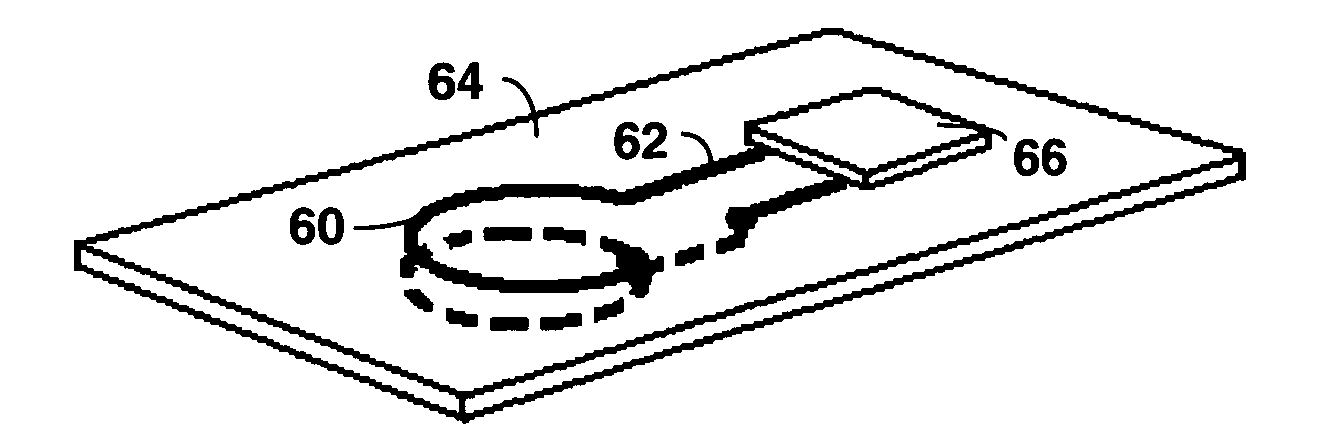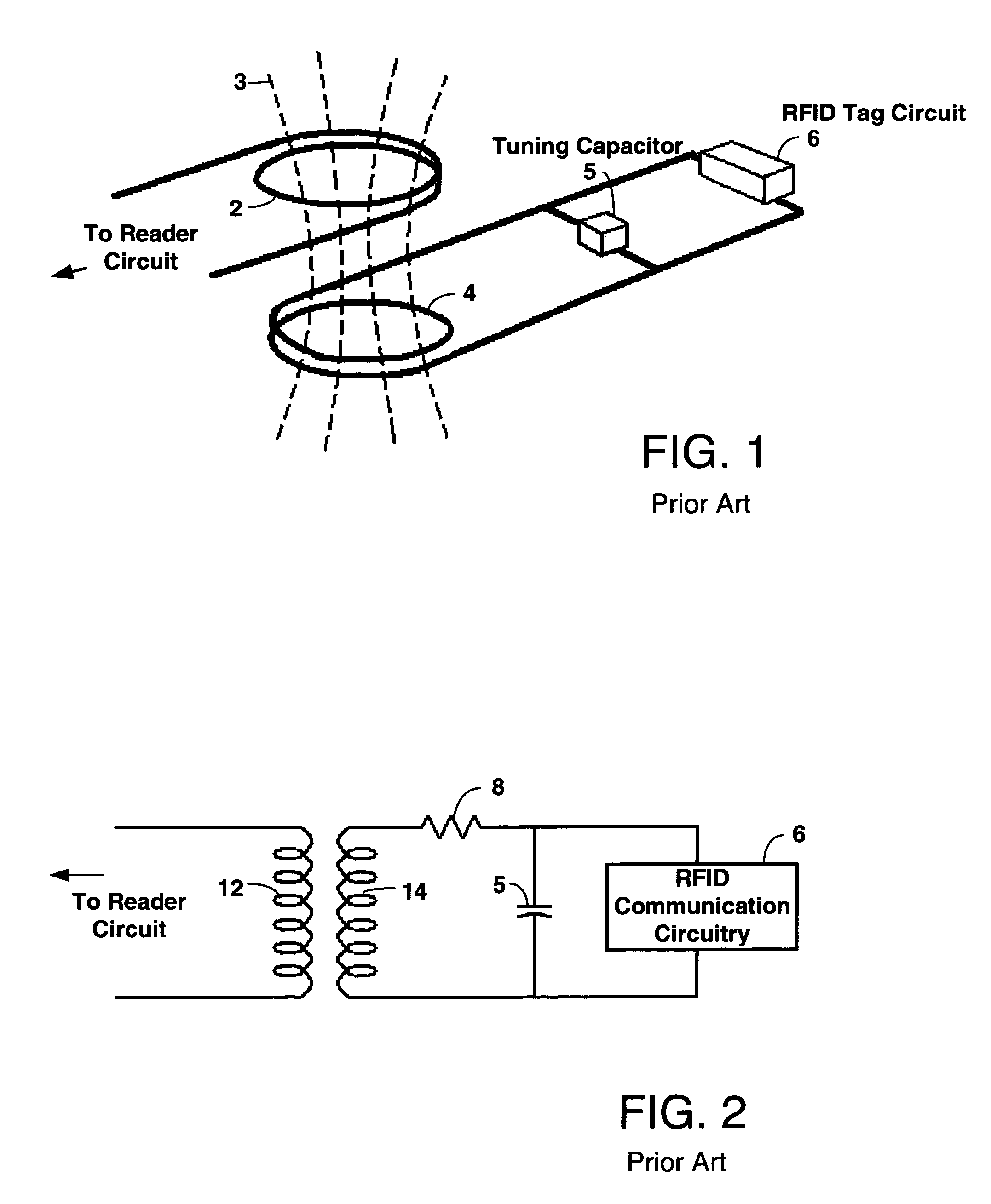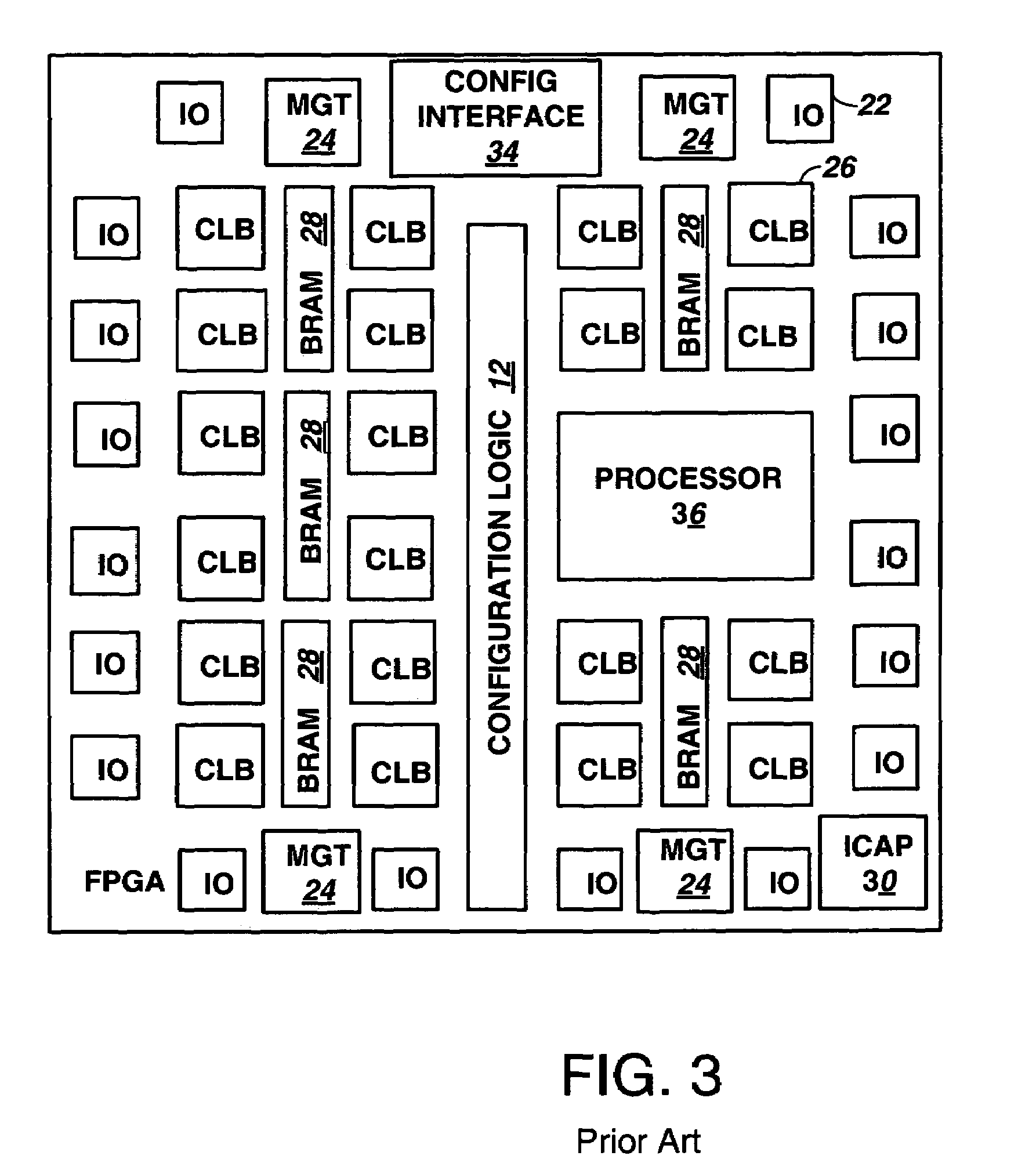Radio frequency identification (RFID) and programmable logic device (PLD) integration and applications
a technology of programmable logic devices and radio frequency identification, applied in the direction of electrical signalling details, instruments, burglar alarm mechanical actuation, etc., can solve the problems of battery powering the bram storing encryption software running out of power, device small, and inoperable pld
- Summary
- Abstract
- Description
- Claims
- Application Information
AI Technical Summary
Benefits of technology
Problems solved by technology
Method used
Image
Examples
Embodiment Construction
[0030]FIGS. 4-6 illustrate how components of an RFID tag can be combined with a PLD, such as a CPLD or an FPGA. The passive tag needs an antenna and simple circuit to communicate. FIG. 4 illustrates how the RFID tag antenna 40 can be formed in one or more metal layers 42 and 44 of the semiconductor die where the PLD is formed. The antenna 40 loops are interconnected with vias to, for example, n-doped areas in a p substrate, and further are connected to an electrical connection to provide signals to internal components of the PLD.
[0031]FIG. 5 illustrates how the antenna 50 can be provided on a chip carrier or die package 52 containing the PLD die 54. The antenna 50 can be wire bonded to leads of the PLD die 54 to electrically connect to internal components of the PLD. The antenna 50 can be formed on the lid 56 of the package 52, or formed separate from the chip carrier and attached to the PLD die 54 inside the package 52.
[0032]FIG. 6 further illustrates how the RFID antenna 60 can be...
PUM
 Login to View More
Login to View More Abstract
Description
Claims
Application Information
 Login to View More
Login to View More - R&D
- Intellectual Property
- Life Sciences
- Materials
- Tech Scout
- Unparalleled Data Quality
- Higher Quality Content
- 60% Fewer Hallucinations
Browse by: Latest US Patents, China's latest patents, Technical Efficacy Thesaurus, Application Domain, Technology Topic, Popular Technical Reports.
© 2025 PatSnap. All rights reserved.Legal|Privacy policy|Modern Slavery Act Transparency Statement|Sitemap|About US| Contact US: help@patsnap.com



